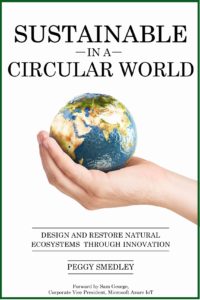Last week, as you might recall, I took a deep dive on where we are today with the IIJA (Infrastructure Investment and Jobs Act), uncovering how the funds are rolling out and some of the big challenges the construction industry faces with these large, complex projects, amid a worker shortage and supply-chain struggles. Today, in this column, the focus will be geared to the future—and more specifically—at new solutions coming down the pipeline.
Perhaps, with material scarcity still drastically stingy some parts of the country, especially with recent events like Hurricane Ian, one of the places we should look for innovation is with the materials themselves. One specific example is cement companies are making a move to cut GHG (greenhouse gas) emissions—which is one of the most widely used materials in the world and is a trillion-dollar industry but is also one of the largest carbon dioxide emitters. In fact, some estimates suggest cement is responsible for as much as 10% of CO2 emissions globally and more than 4 billion tons of CO2 every year.
Another challenge—as many construction companies already know—is the changing availability and variability of concrete raw materials as well as environmental conditions lead to inconsistencies in performance and appearance, resulting in extra production costs and customer dissatisfaction.
But there is some very good new on the horizon with a few innovations that are set to hit the scene. The Clean Energy Ministerial and the Global Cement and Concrete Assn., have announced an agreement to scale up the deployment of CCUS (carbon capture, utilization, and storage) throughout the cement and concrete industry.
Together, the two organizations will be exploring incentives, policy frameworks and finance solutions at a global level that can enable industrial-scale CCUS projects in the next 10 years. The two organizations will work together to ensure the long-term deployment of CCUS, beyond 2030, via both policy and technological development.
Among other objectives, the agreement will help identify the role CCUS can have, explore the transport and storage infrastructure needs involved in integrating cement CCUS projects into strategy CCUS transport and storage hubs, and it will also help to foster project partnerships and lead to acceleration of projects in developing economies.
As another example, AI (artificial intelligence) could soon play a role in making the move to more sustainable infrastructure.
Consider the case of AICrete, which is capturing expert intuition by automating data collection and experimentation with humans and bringing best practices and expertise of optimization and quality control to the industry by using AI. Simply stated another way, the solution optimizes and validates a mixture in days and dramatically reduces material costs alongside the CO2 footprint by augmenting the current capabilities of concrete producers and their technical teams to discover and develop more advanced, cost-effective, durable, and sustainable concrete mixtures.
The company also announced it has raised $4 million in a seed funding—which it plans to use to expand its paid proof-of-concept program to several key concrete producers; expand its database and further improve its predictive machine learning models; as well as automate data collection through the development of software and robotic systems.
There are just a few examples of the construction industry doing its part to leverage AI to reduce emissions and to be more sustainable in a time when we need it most. The bottomline here is that the construction industry is facing a time uncertainty that requires leveraging advanced innovation to fend off threats of unprepared disruption. Threats of disruption to our infrastructure can happen in a blink of an eye. Therefore, it will be important for construction companies to keep an eye on the trends that are on the horizon. There will be tradeoffs and as such there will be winners and there will be losers. Which one will you be?
Want to tweet about this article? Use hashtags #construction #IoT #sustainability #AI #5G #cloud #edge #futureofwork #infrastructure


